Chris Baty's Blog, page 19
November 1, 2022
30 Covers, 30 Days 2022: Day 1
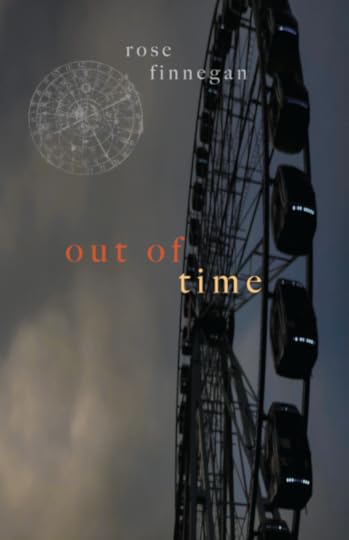
30 Covers, 30 Days is starting off strong! Let’s solve a mystery with Out of Time by Rose Finnegan, a Young Adult novel that’s keeping us at the edge of our seats! This novel cover was designed by the great David Hisaya Asari!
(For those of you who don’t know, 30C30D stands for 30 Covers, 30 Days in which 23 Wrimos and 7 YWP Participants get the chance to win a professionally designed cover! We’ll be posting a cover a day throughout November, so make sure to check them out!)
In 1976, a local boy went missing while at a carnival with his friends. Abody was never found, and he was presumed dead. Now, six years later, on the eve of his supposed death, he’s returned… the same age as when he had left. He has no memory of being gone, but there’s no mistaking the effects his absence had on him. After all, he never used to be able to lift things with his mind. As the boy and his friends work to solve the mystery of his disappearance, it becomes increasingly obvious that an unforeseen evil is threatening their sleepy little town, and to an extent, the whole world. Can they expose the danger before it’s too late?
Rose fell in love with writing when she was eleven years old, and she hasn’t stopped writing since. However, since she can’t spend all of her time writing, Rose can also be found snuggling her cat and reading very thick books. Rose lives in Colorado with her family, where she’s currently pursuing a bachelor’s in Elementary Education.
 About the Designer
About the DesignerDavid Hisaya Asari is an Oakland graphic designer and design educator. He is a faculty in Graphic Design, Critical Ethnic Studies, and Special Programs at California College of the Arts. His studio course focuses oninformation visualization. His Japan study abroad course examines concepts of wabi-sabi and emptiness. President Emeritus of the SF chapter of AIGA, the professional association for design. He’s served on AIGA’s national Design Educators Community steering group. “Tsudonku” is his word of the day.
October 31, 2022
NaNoWriMo x YAP: Every Story Matters
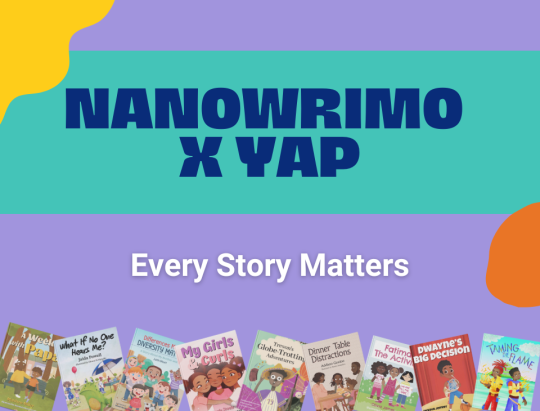
At NaNoWriMo, we believe in the transformational power of creativity. That’s why we team up with other organizations who help share stories and empower writers. Today, Brooke Shannon at Young Authors Publishing, a children’s and young adult book publisher, talk about their work producing diverse and culturally relevant children’s books, and why that work is so important:
Stories are the creative basis of human connection. They encourage organic artistry, form culturally-shifting conversation, and expose the beauties and tragedies of society. Wouldn’t it be important for stories to share the intricacies of various forms of identity (e.g., race, gender, class, ability, age)? Absolutely. Then, is this common practice within the publishing industry? Well, let’s take a look at some statistics.
A 2022 report by Zippia showed that, in the United States, the common ethnicity of authors is White (79.4%), followed by Hispanic/Latinx (7.2%), Black or African American (5.8%), and Asian (4%). More specifically, a 2020 CCBC study researched children’s books and reported the following: “12.1% of children’s books… featured a [Black]/African main character and 7.6% were written by a [Black]/African author.” Additionally, there was a 23% decrease in children’s bestsellers that have Black main characters, according to WordsRated. While the lack of representation is evident, the importance of creating space for diverse stories is not lessened.

To further promote diverse literature, we’ve partnered with NaNoWriMo (National Novel Writing Month), a 501©(3) nonprofit organization that assists writers’ manuscript development. Every November, NaNoWriMo hosts the following challenge: draft an entire novel in one month. And through their Young Writers Program, under-18 writers and K-12 educators are able to participate in the event and let their imagination take over. By partnering with Black and Brown publishers, such as Young Authors Publishing (YAP), this NaNoWriMo program, and others, ensures that underrepresented young writers have an avenue to share both their stories and their voices. Youth can read stories, write stories, and publish stories that reflect the reality of their existence and identity.
Similar to NaNoWriMo, Young Authors Publishing hosts a four-month “Experience Program.” Starting in January of each year, young authors are paired with trained writing mentors to help them conceptualize and write their own children’s books. Once manuscripts are finalized, young authors attend workshops that focus on the fundamentals of financial literacy, entrepreneurship, and public speaking. Through this program, Young Authors Publishing empower young authors to use their words to change the dialogue around representation in literature. And the stories curated from this experience mirror YAP’s mission: to publish books for children and young adults that reflect the diversity of this world.

As NaNoWriMo states on their homepage, “Every story matters.” And the responsibility is on us–publishers, organizations, educators, etc–to generate writing communities and literature that reflects the diversity of the world. Only then can young readers truly experience the rewards of implementing diversity, equity, and inclusion in both publishing and literary spaces.
Young Authors Publishing is a children’s and young adult book publisher that exists to share the stories of Black & Brown children. They believe that all kids are story-worthy and should see themselves reflected in the books they read. Publishing books that reflect how diverse the world is, their two-part mission is to produce culturally relevant children’s books and to use book publishing as a vehicle for economic mobility for their young authors.
Intimidation Got Your Pen? Never Fear, NaNo Has Your Back!

NaNoWriMo is almost here! If you’re feeling nervous about the upcoming month, NaNo participant Jessica Warrick wants to remind you that you’re not alone for this grand challenge and perfection is not required!
Well friends, it’s that time of year again. The leaves are turning here in the U.S. and writers all around the globe are gearing up for another whirlwind of NaNo November. If you’re anything like me, you may be finding yourself riddled with intimidation at the prospect of taking on this challenge. Whether you’re stifled by your word count options, overwhelmed by character or world building, are unsure about the order of events in your book, or any other thing(s) that ought to stand in a writer’s way, I can assure you: you are not alone.
Setting out to write a book is no small feat. It’s easy to look at the process and talkyourself out of it with a quickness. I’m here to tell you that you are as capable as the rest of us, and NaNo is here to equip you with just about everything you need to come out of November as a winner of this annual challenge.
Rewind to my first NaNo challenge in 2019 where I vividly remember staring at my blank word document for what seemed like an eternity. As the cursor continued blinking at me — taunting me — I realized I had a choice: “In 30 days, I’ll either be closer to my finished product, or I’ll be sitting around wishing I hadn’t let intimidation hold me back.” Fast forward to the end of that month where, to my surprise, I had surpassed my goal, ending up with a word count of 50,505. I wasn’t sure I could do it, but I knew committing to getting it done was at least half the battle… and I was right.
The most helpful thing in my NaNo journey has been the permission this platform grants us to “write with literary abandon”. For me, this was something I’d never considered. In my head, I had to write my story in a ready-to-publish manner right from the start. My friends, that is not how this works. Accept that fact, and then give yourself grace to do just as NaNo suggests and leave your literary expertise at the door. Your first draft is not the place for it.
Tell spellcheck you’re busy; she can come back later. Don’t worry about sentence fragments, grammatical errors, or misspellings. Not sure what you want to have happen at this part of your story, but know something should happen? Simply write [something happens here] and keep on writing. You can circle back and iron out the details later. The purpose of NaNo’s challenges — especially if you’re working on your first draft — isn’t to get it perfect; it’s to get it written. That’s exactly what you should focus on. Cliché as it may be, we’re going for progress here, not perfection.
It’s completely normal to feel intimidated by this challenge, or to otherwise feel anxious about how it’ll all come to life. I beg of you: do not let these things stop you from getting started. Your first draft won’t be the next best-seller, but all the same I can assure you: you’ll never stand a chance at becoming the next best-seller if you never commit to writing your story. So, get out of your head, move out of your own way, and find a local NaNo community group because November is coming.
The challenge is open should you choose to embark upon it. In 30 days, you’ll either be closer to your finished product, or you’ll be sitting around wishing you hadn’t let intimidation hold you back. The choice is yours.

Jessica Warrick cares deeply for others and takes great interest in mental illness and wellness. In addition to being an author, she is an optimist who strives to see the positive in everything around her. She is a curious creature who enjoys learning and is at her best when helping others however she can. She is passionate about personal growth, both for herself and everyone else.
Follow Jessica’s work on Instagram under the username @jessicawarrick.author and on Facebook through her author page: Jessica Warrick, Author. Her book Despite the Odds: A Memoir of Grief, Faith, and Healing is available on Amazon. Follow this link to find her socials, her book, and articles she’s been featured in, too!
Photo by Alexis Brown on Unsplash
Author photo by Alexandra Paris dba Grandview Photography
October 28, 2022
The Importance of Filipino Stories: Celebrating Filipino American History Month

October is Filipino American History Month. With more than 4.2 million individuals of Filipino descent here in the U.S., we know there are at least 4.2 million stories to cherish and celebrate! Today’s story comes from Josie Gepulle, our fall 2022 Editorial intern and proud Filipino American.
It wasn’t until I was in my second year of college that I got my first reading assignment on Filipino American stories.
At my university, I was taking a history course entitled “American Radicals and Reformers.” Halfway through the semester, I learned about Larry Itilong, a Filipino migrant laborer who went on to lead the five-year Delano Grape Strike in California and later co-founded the United Farm Workers of America.
I’m pretty sure my jaw actually dropped hearing about this. An actual Filipino American made his way into the history books, one who had a profound impact on the labor movement.
That’s also when it really hit me: there was a lack of Filipino stories in my life.
I grew up in a small suburban Texas town. I was the first and only Filipino my community saw, so I don’t really blame anyone for their ignorance. It was frustrating, however, to receive several comments like, “Are you sure you’re Asian? You don’t look like it at all.” or “Where is the Philippines anyway?” I didn’t understand at that time because I’m proud of my heritage, but what does that mean to a world that doesn’t even know you exist? The most recognition I’ve gotten is from veterans recalling war buddies or travelers who visited Manila once.
I learned the history of the Philippines from my dad, not school. The Philippines, it seems, had no place in the story of America, despite being one of its former colonies. Even the mainstream media barely acknowledged our culture and our community. Any reference to the Philippines seemed to only refer to Manila and how the language was Tagalog. I couldn’t relate to that. My parents are from Bacolod, a city in central Philippines, where the community spoke Illongo. The narrative America wanted to tell about the Philippines, as limited as it was, was not one I could fit into.
It took me a long time to identify as a Pinoy writer. That same year at college when I learned about Larry Itliong, I attended a special event where I heard Jose Antonio Vargas, the famed journalist and immigration rights activist, and openly undocumented Filipino American, give a talk about his book, Dear America: Notes from an Undocumented Citizen. He, too, was a storyteller and writer, just like I wanted to be.
I finally realized I wasn’t alone. I didn’t need to be the author who put the Philippines in the history book. Several writers already did that for me. Carlos Bulosan wrote the famous America Is in the Heart, establishing the Filipino American perspective in literature. Then there are the writers of today, like Elaine Castillo with her book America Is Not the Heart, a clear callback to Bulosan. While Filipino Americans may have different interpretations of their identities, these stories are very much in dialogue with each other.
Each story, including mine, is only a small piece in a much larger puzzle. My own perspective that only represents a tiny fraction of Filipino history. The Philippines is made up of 7000+ islands and has 120+ spoken languages. We have our own history and mythology that existed long before the Americans came and long before the first colonizers, the Spaniards, arrived as well. While colonialism has tried time and time again to erase our stories, remembering our traditions and history is how they live on. We don’t want these stories to become forgotten simply because they’re left out of school curriculums.
However, I do have to take a moment to be grateful for virtual spaces, especially those for writers. While my family is no longer the only Filipino family in my city, it was online where I met my very first Pinoy friends. Together, we traded experiences, laughing at the little tics that our families share. That, too, is an important part of the story. My friends and I aren’t famous, but aren’t those cherished moments together part of our experience as well?
And well, NaNoWriMo is the perfect time to explore your own stories, isn’t it? I remember being drawn to the challenge a long time ago, when I was a tiny middle schooler who felt so lonely in the giant world. NaNo made me believe that my story truly mattered, not just to everyone in the Philippines and America, but to me, the person who all my writing is eventually for. There’s no way I, or anyone for that matter, can accurately describe the story of every single Filipino, let alone Filipino American, out there. But you can talk about your story. Personally, I want to write characters who speak Ilonggo or grew up the only Filipino in their class. Maybe your characters will speak Cebuano or Ilocano. No matter what, Pinoys will get to be main characters! They’ll have grand adventures or share quiet moments with their loved ones. We’ll share our culture, our heritage with the world.
Together, our story will be told. Dungan ta sulat!

Josie Gepulle is a longtime NaNoWriMo fan, spending her teenage years lurking on the YWP forums and procrastinating her novel writing. She loves hearing the unique stories that come from writers all over the world and believes every voice is worth listening to. She enjoys the many different forms storytelling comes in, doing everything from analyzing TV shows to drawing her favorite characters. She can be found scribbling notes or doodling with an array of pens by her side.
If you’d like to learn more about Filipino American History Month, here are some more sites to explore.
October 26, 2022
Step Up Your Character Game: Character Building Through Repeated Actions

There are many ways to establish character building in your writing. NaNo Participant Kathryn A. Patterson talks about how you can use repetition of certain actions to show off your characters’ personalities!
I find inspiration for my writing in the usual places: podcasts, the dog park, alien encounters. This year I found a nugget in, of all places, a book about how to build habits.
In Atomic Habits, James Clear discusses the word identity. He traces the origins of the word back to two Latin words:
• essentitas: which means the essential of something, being
• identitum: which means repeatedly
Identity translates literally into “repeatedly being”.
How does this affect my writing? Two words: character building.
A character is more than a physical description and clothes. A character needs personality, affectations, mannerisms, and other less tangible attributes. However, writing something like “Sam is a kind and warm-hearted person” falls squarely into the tell-not-show category.
Using the idea of “repeatedly being”, an author can show who a character is through their actions and habits as well as their dialogue. A character who habitually hosts dinners for their friends comes across as social and nice. Someone who texts while driving is thoughtless and selfish. By having your characters repeat specific actions, you show the audience who that character is.
For example, Patricia Briggs has written a series of books around her protagonist, Mercy Thompson. Mercy doesn’t take attitude or crap from anyone, but she also is kind-hearted and smart. The readers learn this from how Mercy gets revenge on people who have done something wrong to her. The revenge is never physically damaging, but also completely memorable. On one occasion, Mercy puts blue dye into someone’s shampoo. Even though she knows the dye wear off eventually, the person is very vain, so it works fabulously as revenge.
Readers also learn about Mercy through her baking. Mercy loves baking with chocolate, and she makes cookies and brownies for her people on a regular basis. The author never outright says: “Mercy shows people that she cares about them through her baking.” Instead, the act of baking speaks for itself.
When I start a new writing project, I use a character template for each of my main characters. There, I record all the details about that character. I started this to help with consistency within a story and within a story universe. But I also use the templates to help me define my characters.
After reading Atomic Habits, I changed my character template to include three new fields:
• Habits: a record of important repeated behaviors
• Quirks: a catalog of the character’s peculiarities
• Behavior Patterns: a description of how the character acts or reacts in specific situations
Not every character gets an entry in every field, but I list the fields so I have a place to put the relevant information.
In preparation for NaNoWriMo, I fill out character templates for all the major people in my story. I use the template to construct the character’s personality, tone of voice, and expected behaviors. That makes it much, much easier to write when November 1 rolls around.

Kathryn A. Patterson lives in a crooked house on a crooked road. Alas, she is allergic to cats so she does not own a crooked cat. She lives in a marvelous world, filled with vampires, werewolves, and magic - oh, my! But she pretends to live in a dull, boring world filled with post offices, taxes, and calculators. It makes her family happier when she pretends. You will find her writing like a fiend during November on every day that ends in a “y”.
Her template can be found here. This template is flexible. For example, her templates for her vampire universe includes fields for characters’ vampire house affiliation. For her sci-fi novels, she adds fields for home planet and other related info.
Photo by Marissa Grootes on Unsplash
October 25, 2022
Pro Tips from a NaNo Coach: Writing with Chronic Injuries
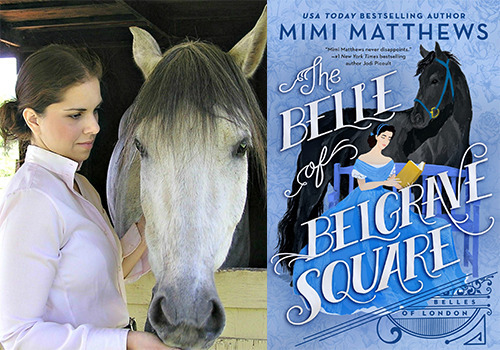
NaNoWriMo can seem like a daunting task sometimes, for NaNo newbies and veterans alike. Fortunately, our NaNo Coaches are here to help guide you through November! Today, author Mimi Matthews is here to share her advice on how to set yourself up for noveling success:
Dear Fellow Writers,
In an ideal world, we’d all be starting our manuscripts this November, bright-eyed and clear-headed, limited by nothing but time and the scope of our imaginations. In reality, many of us—myself included—are dealing with physical or mental health issues that impact our productivity. That doesn’t mean we can’t write a novel in a month. It just means we have to prepare a little differently.
I’ve written all of my books while struggling with pain from a cervical spine injury. There’s no secret to it, only a little self-knowledge. Pain is a part of my life I have to manage along with all the rest of my responsibilities. It can be discouraging at times, but it’s never once prevented me from completing a manuscript. With that in mind, here are a few of my personal strategies for starting (and finishing!) a novel.
1. Be prepared.Before you begin your manuscript, arm yourself with all the implements you’ll need to support pain-free writing. For me, this means a huge collection of neck pillows, ice packs, and a never-ending supply of Aleve. The more supportive I can be of my neck injury, the better success I have in my work.
2. Be flexible.Get rid of your preconceived ideas about when and where you should write. Instead, write when you can and where you can, in whatever way best supports your health. A story is no less compelling because you wrote it while propped up in bed at 2am instead of sitting at your desk at eight in the morning.
3. Listen to your body.If writing is hurting you, then stop for a while. Don’t give in to the panic about failing to meet your writing goals. Yes, it’s scary to fall behind, but there’s really no such thing as powering through to reach a daily word count when you’re in pain. You might be able to do it once or twice, but the work always suffers.
4. Write less to write more.It seems nonsensical, I know, but I’ve found that stopping work for the day when my neck starts to ache is the best way to ensure that I write more later. If I continue working while in pain, it sometimes takes me days or even weeks to recover from the ensuing flareup. Conversely, if I stop for the day, I almost always write double or triple the words at my next writing session.
5. X marks the spot.I write historical novels, which necessitates a great deal of research. That can mean a lot of stops and starts as I’m writing. I sometimes lose the rhythm of the scene. Even worse, the stress of changing course so often can trigger my pain. To combat this, I use XX to mark things I need to research later. I also use XX in place of character names, locations, or clothing descriptions I haven’t thought up yet. Doing this allows me to get the bones of the story arranged much faster, without those frustrating (and pain triggering) stops and starts.
There’s no one size fits all way to finish a manuscript, especially if you’re struggling with challenges to your physical and mental health. Be mindful of your needs. Be flexible in your habits. And, above all, be kind to yourself. Writing a novel is a huge undertaking at the best of times. A little preparation—and a generous supply of grace and patience with yourself—will make the experience a lot less painful.
xx Mimi Matthews
USA Today bestselling author Mimi Matthews writes both historical nonfiction and award-winning proper Victorian romances. Her novels have received starred reviews in Publishers Weekly, Library Journal, Booklist, Kirkus, and Shelf Awareness, and her articles have been featured on the Victorian Web, the Journal of Victorian Culture, and in syndication at BUST Magazine. In her other life, Mimi is an attorney. She resides in California with her family, which includes a retired Andalusian dressage horse, a Sheltie, and two Siamese cats.
October 24, 2022
Black Joy Is Revolutionary or Why Writing Black Doesn't Equal Trauma or Pain

It’s important to talk about what kind of stories get represented in mainstream media. NaNo Participant Kymberlyn Reed tells us why stories centered around Black joy are necessary.
As a little Black girl who loved reading, it always saddened me that there was never a Babysitter’s Club or Sweet Valley High series in which Black kids were centered (not sidekicks or best friends lacking a backstory) just having fun, going through typical teenage stuff and hanging out with cool friends. The fantasy genre, as much as I loved it, also seemed to have no place for Black people to had amazing adventures in far away worlds.
That’s why — as a middle aged Blerd — I have been on an absolute roll with so many wonderful stories about Black people just existing and I think there needs to be MORE of them. There is room for Black joy in a society that devalues Blackness as a whole (while co-opting and/or misappropriating the aspects it finds marketable).
This isn’t to say there’s no need for stories centered around the very real issues of social justice. There’s a reason Angie Thomas’ The Hate U Give resonated with so many readers of all races (and why so many school districts are trying to ban it). However, not everything about Blackness is about pain and suffering.
And that’s the problem. The idea of a single black experience — mainly centered around our suffering —has far too long dictated what people want to write and/or read about us. If there had been more books about Black mermaids in the past (despite the fact that many African cultures have myths about mermaids), people probably wouldn’t be losing their minds over Halle Bailey right now.
Not every book about Black people needs to be a “teachable moment” for non-Black readers. Black people should not have to exist or expend unpaid emotional labor just to “teach.” Our historical and current traumas should not be the only way to create “empathy.”
Black joy seems to upset people or has some of them believing it’s not "authentic Blackness.” One of my all time favorite romance authors — Beverly Jenkins — once received a letter from a white reader who was SHOCKED that Black people actually fell in love and had committed relationships! She long believed that Black people just had indiscriminate sex and children out of wedlock.
It took a historical romance featuring a Black hero and heroine to open this woman’s mind.
Reading and writing about Black people doing the mundane (as we do everyday) in made up worlds shows us just being, that our skin in all of its glorious hues, is just a part of who we are. We have many intersecting identities, and limiting us to the “poor downtrodden Black person in need of saving” deprives us of our individuality.
Black LGBTQ have coming-out stories and meet-cutes.
Black girls can be princesses.
Black men can be cowboys (and in fact were some of the original cowboys).
Most importantly, Black people exist in every walk of life, even in places and spaces where the media at large ignores our presence. For example, there are Black surfers who teach free courses at The Inkwell, a historic stretch of beach located in Santa Monica, California.
When you read or write about Black people living fully, you are changing the narrative and in a lot of ways, changing minds. Not only that, but writing Black joy is fun too. It’s inclusive and it’s telling Black readers our stories matter.
All of them.

Kymberlyn Reed is an author who’s been published in two countries–Germany and the U.S. No, she doesn’t speak a bit of German, but her writing “sister” does.
She’s been doing the NaNoWriMo thing for a long time now and will always be a pantser because her characters refuse to behave otherwise. She owns more books than clothes. She’s also a lifelong Blerd, fountain pen and Japanese stationery aficionado, lipstick junkie, and an unapologetic metalhead who can do a pretty good death metal growl with enough absinthe in her system.
Photo by Junior REIS on Unsplash
October 21, 2022
Making Time: 5 Ways Writers Prepare for Success With Timelines

Every year, we’re lucky to have great sponsors for our nonprofit events. Aeon Timeline, a 2022 NaNoWriMo sponsor, is a visual hub for your entire story. NaNoWriMo writers can try out a free trial of Aeon Timeline through December 15! In this post, the folks at Aeon share a few ways that making a timeline for your novel can help your story:
If you are like me your story has been gnawing inside you for months. An intriguing premise; a character to explore; a surprise twist; a cliffhanger ending—something is telling you that you are the person to write this story.
Yet every year, only one in ten Wrimos make it to the end. Over 200,000 promising novels are abandoned—typically in the sticky middle stages.
At Aeon Timeline, we believe that visual planning with timelines can bring purpose to your writing, add depth to your characters, and sustain your creative energy until the end.
With help from authors David Williams and Andrew Hanson, let’s look at why so many stories fail in the middle stages, and the planning you can do now to avoid those mid-novel traps.
1. Steer your story in the right directionWriting a novel any time is tough; finishing one in a month is crazy. To get to the finish line, you need to make sure every scene is pulling in the right direction.
I find it easier to maintain momentum when I have the lure of a compelling climax to write towards. Creating this sense of direction is what building a visual story timeline is all about.
Don’t worry: 50,000 words provides abundant room for creativity. Planning a few signposts won’t change that, but it will make writing less stressful.
“I like to write fast and I like to write loose. Aeon Timeline allows me to do more of that, because it encourages me to be spontaneous in the space in-between. It’s actually going to enhance your creativity, and give you more freedom.”
– David Williams
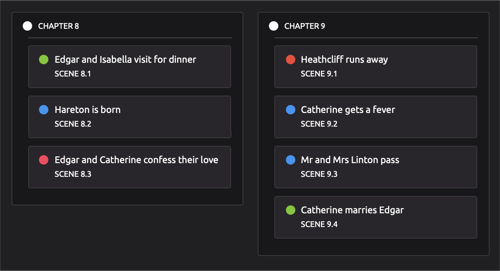 2. Perfect your pacing with the right time frame
2. Perfect your pacing with the right time frameWe writers talk a lot about setting, but stories live in time as much as they live in space. Time is crucial to controlling pace and tension.
Ask yourself:
What is the chronology of my story? What are the key moments and when do they need to happen?What if I compressed my timeline? Would it increase tension, and force my characters to act impulsively? Or do my characters need more time to grow?You could use pen and paper, but using a digital timeline encourages you to freely experiment and find new possibilities:
3. Cultivate characters with purpose
“Looking at this on the timeline, I thought, that’s actually the beginning and end of the story. I’ve taken 20-odd years of information, and reframed it around a single weekend. Just the freedom to be able to throw these events around made me realize I had been getting it entirely wrong.”
– David Williams
You determine every choice for your characters, but you want them to bring their own goals and motive to every scene. To pull off this magic trick, each character’s stakes need to be high enough that they can’t simply walk away.
To ensure authentic choices, it helps to build thorough backstories for your characters and your world. What recent events instigated your story? How are they compelling your characters into action? Which historical scars and social pressures provoke their reactions in each scene?
By plotting these histories visually, you can cross reference personal and world events—prompting fresh insights about your characters.
“I start with the characters, and then flesh out the backstory events to make sure that the story logic makes sense. By story logic, I really mean that the events leading up to the present day of the story make sense to the reader.”
– Andrew Hanson
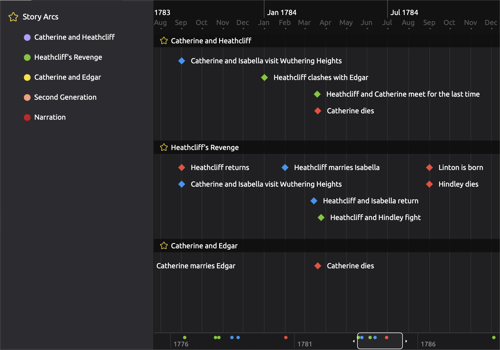 4. Amplify tension throughout your middle chapters
4. Amplify tension throughout your middle chaptersThe first quarter of your book is done—your characters have taken that first irreversible step. The final chapters are whispering to you with the siren call of crisis and resolution.
But first, you have half a novel to increase stakes and layer pressure on your characters. That is a lot of empty space to fill with complications that don’t feel repetitive or contrived. You can drop another dead body, but can you really drop five?
It is easy to see why so many stories are abandoned in the middle. Why not plan your escalations in advance, while you have time to experiment and your story feels fresh?
If a better idea strikes while writing, that’s great! But if it doesn’t, your story timeline can keep you on solid ground:
“The timeline is my barometer of story. It gives me an idea of where the pressure points are in a story, whether the story is working or not. It’s my eyes and ears on the story.”
– Andrew Hanson
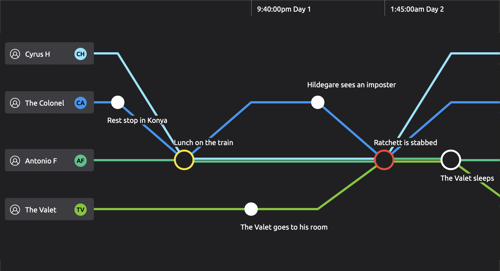 5. Plan scenes as agents of change
5. Plan scenes as agents of changeWe have all stumbled on that one scene that doesn’t want to be written. You can’t wait to throw yourself at the next crisis point, if you could just get that one scene right. But until then… Everything. Just. Stops.
Often, this block is surprisingly simple: your scene isn’t doing anything:
“The most important thing that every single scene has to have is change — external plot change or internal character change, but ideally both. If I am struggling with the writing of a scene, I can go into Aeon Timeline and fill in the details to work out where the scene has gone wrong.
– Andrew Hanson
Aeon Timeline is a flexible visual hub for planning your entire story. You can find detailed case studies describing how David and Andrew use Aeon Timeline on our website.
Download a free trial on Mac, Windows and iOS. Discounts are available to all NaNoWriMo participants until December 15. To claim, log into your NaNoWriMo account and visit the Offers page.
October 20, 2022
What Are Tropes and Why Should You Include Them in Your Story?

Every year, we’re lucky to have great sponsors for our nonprofit events. Campfire Technology, a 2022 Camp NaNoWriMo sponsor, creates writing software to help storytellers write better stories faster. NaNoWriMo writers can try out Campfire’s Manuscript Module for free thisNovember! In this post, writer Amanda Jones shares some of the pros of story tropes:
With NaNoWriMo 2022 quickly approaching, writers everywhere are plotting, planning, and exploring ideas for the worlds they intend to visit come November. This, of course, likely includes drafting the elements of your story from literary tropes!
What are tropes, you ask? The definition has changed slightly over time, but we have come to know them as the commonly used building blocks of the stories we read and write. Not only are they just fun to play with in a setting of your own making, but they help us connect over shared experiences, regardless of the places we are from or the time we live in.
As a member of several online writing communities, I’ve often seen anti-trope discourse such as: “If a book contains X trope, I won’t read it,” or “X trope is so overdone, I can’t stand it.” And it worries me to think there is at least one writer out there who will stop writing their story after coming across something like this.
Because tropes exist for a reason.
You’re probably well acquainted with The Chosen One trope, about the one who came from a place no one has ever heard of. There has likely never been anything particularly special about them until they are called upon to be the hero.
You also know The Evil One and the moment in the story where they raise the stakes by gaining the upper hand—usually in the form of briefly acquiring the one thing you don’t want them to have… Until The Chosen One wins it back by overcoming the odds, that is.
You know these because tropes are as old as storytelling itself. As the familiar bones that make up our most cherished stories, they make us feel more at ease in unknown worlds. You may be adventuring on a different planet or in a new mystical realm, but hey, you recognize that old wizard there!
So the question isn’t how do you write a story without any tropes, but rather:
How do you make tropes unique to your story? How do tropes take shape and form and establish the setting in your world? How do they create conflict and how do your characters overcome that conflict?Ask yourself these questions when planning & ultimately writing your story.
I know there is at least one writer out there telling themselves that their ideas aren’t original, maybe because it’s been done before, maybe for some other reason, whatever it may be. It’s important for writers (myself included) to be reminded that it’s okay if you’re not reinventing the wheel. After all, it is already invented—but that doesn’t mean you still can’t soup that wheel up!
Writing is hard enough as it is, never mind comparing yourself to other writers. So write about the tropiest of tropes that ever did exist if that’s what you want your story to include. All that matters is what you do with it.
Still looking for a place to actually write this trope-heavy masterpiece we are speaking of? Hi, meet Campfire. As a proud partner of NaNoWriMo, we are offering our Manuscript Module for FREE during the month of November to all writers participating in NaNoWriMo 2022.
You’ll need an account on both Campfire and NaNoWriMo—free to sign up on each—and then you can simply integrate both from your Campfire account settings beginning October 20th, 2022. We’ll automatically track your writing progress, too, so you have one less thing to worry about.
Good luck this year, Wrimos!

Amanda Jones is the Digital Content Coordinator at Campfire Technology where she leads their content marketing initiatives, from managing their social media channels to drafting copy and overseeing Campfire Learn’s SEO strategy. You can follow her on Campfire or connect with her on Campfire’s Discord server. If you’re looking to organize your writing notes better, try out Campfire Write for free!
Top image: The dragon of Moston from Ballads and Legends of Cheshire (1867). Original from the British Library. Source: Rawpixel.
Four Steps to Plontsing

Plotting? Pantsing? Why not both! Billy Ovid Boyles, a longtime NaNoWriMo participant is a proud Plontser and has tips on how you can utilize plontsing for your novel!
Well, it’s that time of year. My desk is covered with articles about plotting versus pantsing. I’ve had my own experience with the two approaches and confess that these days, I’m a hybrid. I’m a Plontser. I both plot and pants. Sounds absurd? It’s not. In fact, it seems to me the most straightforward way to proceed with a novel. There are four things I keep in mind when I’m prepping for NaNo.
1. Initial Plotting
Whenever Plotober (October) rolls around I start plotting. Usually, I’ll storyboard the story I imagine writing. I have a whiteboard that I divide up into squares, each square representing a specific scene/chapter in the book. I usually come up with an initial title for each chapter and record a couple words on the whiteboard what I imagine the chapter is about. One important thing about the advantage of plotting is you have a beginning and you have an end. It’s very nice to have those two things resolved before you start NaNo. I’ve had spells of agonizing over beginnings and endings, and it’s no fun if you’re under the thirty-day gun.
2. Create a Detailed Outline
So, the second step is to compose a detailed outline based on the storyboard. There are lots of tools you can use for this, fairly sophisticated stuff from Scrivener to Aeon Timeline. I just use a word document and styles to organize my outline.
An outline can help to reveal any plot holes or timing issue. Use whatever tool you want to catch that draft outline, but make sure the work follows a logical progression with no gaping holes in the storyline.
3. Develop Characters
In the third step, characters are important, and Plotober is a great time to develop characters. The same tools that help you build your storyline can help you build character profiles, with an organized way to approach the creation of the keys to your story. I personally like to take my characters out and about. I ride a bike and it’s easy for me to imagine my characters if they were faced with a bike ride. What kind of physical condition is the person in? How do they react to the flow of traffic around them? Is there any joy in the riding itself? Yeah, yeah, I get creative in Plotober. It’s important to have as close a relationship as possible with your characters and it doesn’t hurt to put them in situations where they have to “come to life”.
And that’s the final key to this. I have developed several detailed outlines for my November efforts over the years … and almost every one of them has been hijacked by some twist I think up when fleshing out the storyline, taking the whole story in a different direction.
That’s a reward.
4. Let the Outline Roam Wild
Step four is allowing your outline to get jacked by a better direction. That is one of the true joys of writing: when the novel “comes alive.” When my story starts writing itself, that’s like … getting to the heart of a freshly steamed artichoke! Or Uncle Biff’s Killer California cookies. It’s what you really want to happen. When the characters start talkin to each other. When the story turns on the strength of the characters. And, if your twist doesn’t turn out, you’ve always got the outline to fall back on. Remember, every word during NaNo counts—even if they’re in the wrong direction for a bit.
That’s your four steps to Plontsing. Best wishes!

Billy Ovid Boyles is a 65-year-old, retired computer geek now dedicated to writing crazy fiction. He’s been participating in NaNo since 2011 and has met the 50,000-word challenge four times. All four of those ‘wins’ eventually wound up being published through Kindle Direct Publishing. You can visit his Facebook page or his website.
Image by Pexels from Pixabay
Chris Baty's Blog
- Chris Baty's profile
- 63 followers



